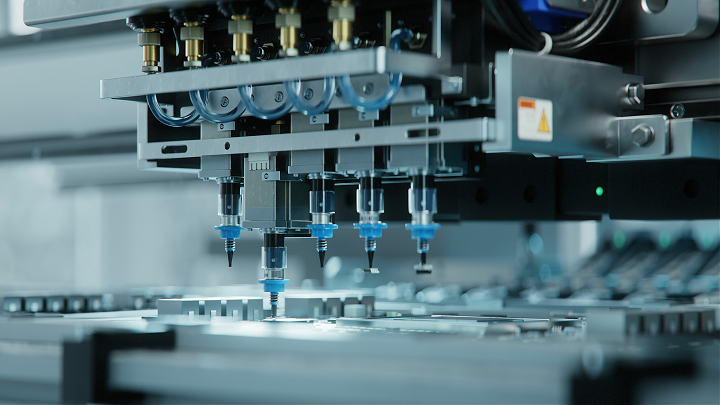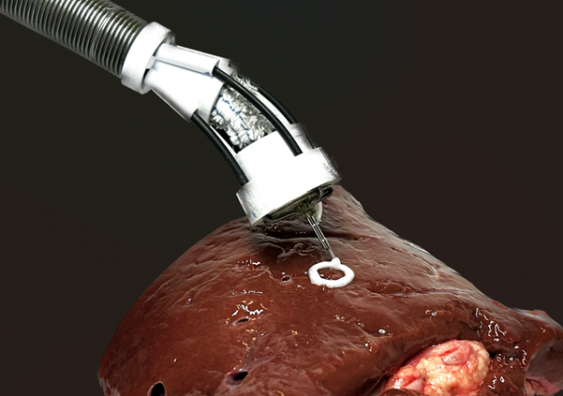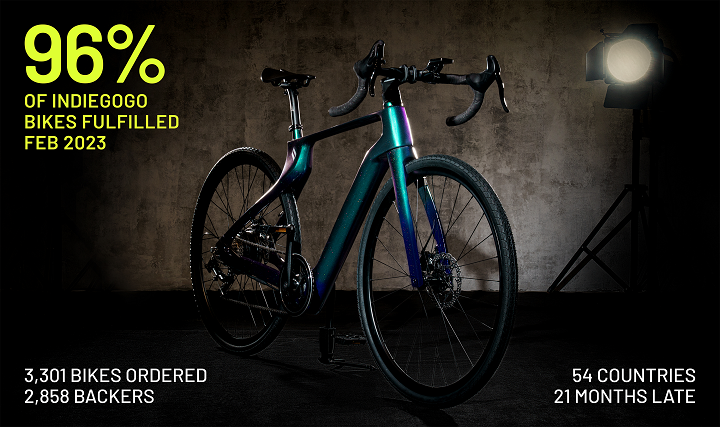In today’s 3D Printing News Briefs, Velo3D has released the latest version of its Flow software, and Horizon is opening up more micro additive manufacturing applications with a coating that makes parts selectively conductive. Researchers from Australia developed a miniature soft robotic arm that can 3D print biomaterial directly onto organs inside the body, and 3D LifePrints has rebranded as Insight Surgery. Finally, Superstrata has completed the fulfillment of 96% of its crowdfunded carbon fiber bikes.
Velo3D Announces Latest Release of Flow Software
 Flow 5.0 now features a new graphical merging feature that enables operators to calculate build times for builds of different part quantities more quickly.
Flow 5.0 now features a new graphical merging feature that enables operators to calculate build times for builds of different part quantities more quickly.Metal AM leader Velo3D (NYSE: VLD) announced the latest release of its Flow software solution for print preparation, which is a crucial part of the company’s fully integrated solution. Flow 5.0 offers many new capabilities for users, like the ability to contour overrides, apply skin, and choose core parameter sets. Combined, these features allow customers to have greater control over the 3D printing process, and the final material properties of the parts. The release also offers labeling of objects with alphanumeric characters to identify part instances, pre-print analysis for finding possible errors, rapid resequencing for multi-part parts, a faster method to calculate print times for builds of different part quantities, and more.
“Through our software, we are able to continually expand our manufacturing capabilities based on customers’ needs and feedback. By enabling selectable core parameters for customers, engineers can modify the material properties of their parts to better suit the need of the application, including more isotropic parts. This even works on builds with multiple types of parts where each requires a different core parameter set,” explained Alexander Varlahanov, VP of Engineering at Velo3D.
Horizon Producing ESD Sensitive Parts with Micro AM & Coating
 Pick and place machine
Pick and place machineHorizon Microtechnologies is using its in-house coating technology for template-based 3D microfabrication to open new application areas that have yet to benefit from micro additive manufacturing, specifically producing components and parts that need to suppress electrostatic discharge (ESD). ESD happens when a charged object comes into contact with a second object and static electricity is released, and the problem is an expensive one, as the short but intense electrical current can cause permanent damage when flowing to or across electronic components in a manufacturing setup. As such, tools and materials used in a production setting need proper grounding, along with a minimum amount of conductivity, to enable a controlled release of any electrostatic charges, and the designers are the ones who have to add this protection. Horizon’s coating can make plastic 3D printed parts selectively conductive, and with more micro-electronic components these days becoming more sensitive to static discharge, its technology combines ESD compliancy and precision polymer micro-AM to help eliminate ESD in applications like electronics packaging design, developers of assembly and handling equipment, and tooling for pick and place machines.
“At Horizon, we can make parts with a controllably conductive surface coating and can also coat internal channels with multiple bends. This allows us to make very compact and high-performance end-effectors for vacuum pick-and-place devices which are at the same time conductive enough to prevent electrostatic discharge. Antistatic properties and ESD safety also enables the use of our parts under conditions requiring spark-freedom and explosion-protection,” said Andreas Frölich, Founder and CEO of Horizon.
UNSW Sydney’s Soft Robot Could Enable 3D Bioprinting Inside the Body
 The tiny flexible 3D bioprinter developed at UNSW Sydney was able to 3D print a variety of materials with different shapes on the surface of a pig’s kidney. Photo: Dr. Thanh Do
The tiny flexible 3D bioprinter developed at UNSW Sydney was able to 3D print a variety of materials with different shapes on the surface of a pig’s kidney. Photo: Dr. Thanh DoResearchers from UNSW Sydney created a flexible, miniature soft robotic arm as a proof of concept 3D bioprinter, called F3DB, which can deliver biomaterials directly onto the surface of internal organs and tissues inside the human body. The device has a highly maneuverable, three-axis swivel print head, attached to the end of a long, soft robotic arm, with a small enough diameter that it can be easily inserted into the body to print bioink. The print head is made of soft artificial muscles, and its nozzle can be programmed to print pre-determined shapes, or operated manually for more complex bioprinting; a machine learning-based controller aids the printing process. Finally, hydraulics allow the arm to bend and twist, and various elastic tubes and fabrics enable its stiffness to be finely tuned. As detailed in their paper, the team demonstrated their technology by testing cell viability of living biomaterial after it had been printed inside an artificial colon, as well as the surface of a pig’s kidney. Most of the cells were observed to be alive post-printing, and even continued to grow for another week. Also, as demonstrated on a pig’s intestines, the F3DB can be used to perform a range of functions as an all-in-one endoscopic surgical tool—the nozzle can act as an electric scalpel to mark and cut away cancerous lesions, while water can be directed through it to clean away any blood and excess tissue. The system has been granted a provisional patent, and the next step is in vivo testing on live animals.
“This system offers the potential for the precise reconstruction of three-dimensional wounds inside the body, such as gastric wall injuries or damage and disease inside the colon,” said research team leader Dr. Thanh Nho Do, a Scientia Senior Lecturer at UNSW’s Graduate School of Biomedical Engineering (GSBmE) and Tyree Foundation Institute of Health Engineering (IHealthE).
“Our prototype is able to 3D print multilayered biomaterials of different sizes and shape through confined and hard-to-reach areas, thanks to its flexible body.
“Our approach also addresses significant limitations in existing 3D bioprinters such as surface mismatches between 3D printed biomaterials and target tissues/organs as well as structural damage during manual handling, transferring, and transportation process.”
3D LifePrints Has Rebranded as Insight Surgery
At the recent launch of its U.S. business, 3D LifePrints announced that it had rebranded to Insight Surgery, to reflect the organization’s growth from a UK medical 3D printing company to a cross-Atlantic personalized surgery provider. The official launch was held at the British Consulate General’s residence in Houston, while the company’s first cleanroom manufacturing facility in the country will be at the Texas Medical Center. The rebranding comes at the same time the company received its second FDA 510(k) clearance for non-acute, non-joint replacing osteotomies in the appendicular skeleton, such as the resection of bone tumors. It’s said to be the widest clearance obtained of its sort that covers both upper and lower extremities, and is enabled by Insight Surgery’s FDA cleared EmbedMed digital platform for surgeons, which digitizes the surgical planning process and allows for quick design and manufacturing of patient-specific medical devices.
“Firstly, I’d like to thank Houston for such a warm welcome. We have chosen the launch of our US business as the ideal time to rename the company to “Insight Surgery” so that it aligns with our focus on digital planning and personalised surgery,” stated Henry Pinchbeck, the Co-Founder and CEO of Insight Surgery. “Having supplied personalised devices to over 1000 surgeries in the UK we now turn our attention to the US market, specifically Texas.”
Arevo Fulfills 96% of Crowdfunded Superstrata Carbon Fiber e-Bikes
Finally, carbon fiber company Arevo launched its wildly successful Indiegogo crowdfunding project for the 3D printed custom carbon fiber Superstrata e-bike in early 2020. The campaign earned over $7 million in donations…right before all kinds of major world events occurred that knocked the company off its schedule. But, while other companies dissolved and many crowdfunding campaigns disappeared without fulfilling their promised benefits, Superstrata worked hard to keep on track, cutting expenses, prioritizing perk fulfillment, and at one point, 150 factory workers and professional staff even moved into the factory for three months to keep working. It all paid off, as the company has now completed fulfillment of 96% of its perks, which equals 3,301 custom 3D printed carbon fiber bikes and e-bikes produced for 2,858 backers at its Vietnam facilities. Superstrata was initially meant as a case study of Arevo’s carbon fiber 3D printing, but the quality and weight of the bike continuously improved, and the technology is ready for a new application.
“When we started this journey more than two years ago, we expected fulfillment to take months, not years. We never imagined our campaign would receive 72 times the support we expected – or that a global pandemic, war, and economic downturn would follow. Today’s outcome was only possible because of our backers’ faithful support and our team members’ unstoppable commitment,” said Arevo CEO Sonny Vu.
“It’s almost laughable that we applied our industrial 3D printing technology to a consumer product category (bikes) with which we had no experience, but doing so battle-tested our processes in ways we never thought necessary. Whether our next frontier is aerospace, defense, or an emerging category that has yet to be named, one thing is certain: few things could be more complex than manufacturing a bike in 2021.”
Subscribe to Our Email Newsletter
Stay up-to-date on all the latest news from the 3D printing industry and receive information and offers from third party vendors.
You May Also Like
Nylon 3D Printed Parts Made More Functional with Coatings & Colors
Parts 3D printed from polyamide (PA, Nylon) 12 using powder bed fusion (PBF) are a mainstay in the additive manufacturing (AM) industry. While post-finishing processes have improved the porosity of...
3DPOD Episode 193: Flow and What’s Possible in 3D Printing with Ricky Wildman, University of Nottingham
Ricky Wildman is working on 3D printing pills, but, as Professor of Multiphase Flow and Physics at Nottingham, he does a whole lot more. His research encompasses the characterization of...
3D Printing Webinar and Event Roundup: March 17, 2024
It’s another busy week of webinars and events, including SALMED 2024 and AM Forum in Berlin. Stratasys continues its in-person training and is offering two webinars, ASTM is holding a...
3D Printed Micro Antenna is 15% Smaller and 6X Lighter
Horizon Microtechnologies has achieved success in creating a high-frequency D-Band horn antenna through micro 3D printing. However, this achievement did not rely solely on 3D printing; it involved a combination...































